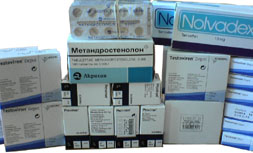|
Sports Psychiatry
Sports psychiatry is a Medical Specialty, medical specialty that aims to treat and prevent mental disorders in athletes and helps them use different techniques to enhance their performance. First mentioned in literature in 1967, it is a developing area that relies on other fields, like sports psychology. History The first publication on sports psychiatry was written in 1967 by Arnold R Beisser, a doctor and tennis player. It was brought up in literature again twenty years later by JH Rick Massimino, MD, and mentioned again in 1992 by California-based psychiatrist Daniel Begel, who is known for officially launching the specialty. As the field developed, the World Psychiatric Association eventually created a section on Exercise and Sports Psychiatry, giving way for interest in other countries, including Britain and Germany. International Society for Sports Psychiatry In 1994, Begel founded the International Society for Sports Psychiatry (ISSP). The organization aims to spread the ... [...More Info...] [...Related Items...] OR: [Wikipedia] [Google] [Baidu] |
Medical Specialty
A medical specialty is a branch of medical practice that is focused on a defined group of patients, diseases, skills, or philosophy. Examples include those branches of medicine that deal exclusively with children (paediatrics), cancer (oncology), laboratory medicine (pathology), or primary care (family medicine). After completing medical school or other basic training, physicians or surgeons and other clinicians usually further their medical education in a specific specialty of medicine by completing a multiple-year residency to become a specialist. History of medical specialization To a certain extent, medical practitioners have long been specialized. According to Galen, specialization was common among Roman physicians. The particular system of modern medical specialties evolved gradually during the 19th century. Informal social recognition of medical specialization evolved before the formal legal system. The particular subdivision of the practice of medicine into various specialt ... [...More Info...] [...Related Items...] OR: [Wikipedia] [Google] [Baidu] |
World Anti-Doping Agency
The World Anti-Doping Agency (WADA; french: Agence mondiale antidopage, AMA) is a foundation initiated by the International Olympic Committee based in Canada to promote, coordinate, and monitor the fight against drugs in sports. The agency's key activities include scientific research, education, development of anti-doping capacities, and monitoring of the World Anti-Doping Code, whose provisions are enforced by the UNESCO International Convention Against Doping in Sport. The aims of the Council of Europe Anti-Doping Convention and the United States Anti-Doping Agency are also closely aligned with those of WADA. History The World Anti-Doping Agency is a foundation created through a collective initiative led by the International Olympic Committee (IOC). It was set up on 10 November 1999 in Lausanne, Switzerland, as a result of what was called the "Declaration of Lausanne", to promote, coordinate and monitor the fight against drugs in sports. Since 2002, the organization's head ... [...More Info...] [...Related Items...] OR: [Wikipedia] [Google] [Baidu] |
Family Therapy
Family therapy (also referred to as family counseling, family systems therapy, marriage and family therapy, couple and family therapy) is a branch of psychology and clinical social work that works with families and couples in intimate relationships to nurture change and development. It tends to view change in terms of the systems of interaction between family members. The different schools of family therapy have in common a belief that, regardless of the origin of the problem, and regardless of whether the clients consider it an "individual" or "family" issue, involving families in solutions often benefits clients. This involvement of families is commonly accomplished by their direct participation in the therapy session. The skills of the family therapist thus include the ability to influence conversations in a way that catalyses the strengths, wisdom, and support of the wider system. In the field's early years, many clinicians defined the family in a narrow, traditional manner ... [...More Info...] [...Related Items...] OR: [Wikipedia] [Google] [Baidu] |
Counseling
Counseling is the professional guidance of the individual by utilizing psychological methods especially in collecting case history data, using various techniques of the personal interview, and testing interests and aptitudes. This is a list of counseling topics. Therapeutic modalities * Academic advising * Art therapy/dance therapy/drama therapy/music therapy * Brief psychotherapy * Career counseling * Christian counseling * Co-counseling * Connectionism * Consultant (medicine) * Counseling psychology * Couples therapy * Credit counseling * Crisis hotline * Disciplinary counseling * Ecological counseling * Emotionally focused therapy * Existential counseling * Exit counseling * Family therapy * Genetic counseling * Grief counseling * Intervention (counseling), Intervention * Licensed professional counselor * Mental health care navigator * Mental health counselor * Narrative therapy * Navy counselor * Nouthetic counseling * Online counseling * Pastoral counseling * Person-center ... [...More Info...] [...Related Items...] OR: [Wikipedia] [Google] [Baidu] |
Psychoeducation
Psychoeducation (a portmanteau of psychological education) is an evidence-based therapeutic intervention for patients and their loved ones that provides information and support to better understand and cope with illness. Psychoeducation is most often associated with serious mental illness, including dementia, schizophrenia, clinical depression, anxiety disorders, psychotic illnesses, eating disorders, personality disorders and autism, although the term has also been used for programs that address physical illnesses, such as cancer. Psychoeducation offered to patients and family members teaches problem-solving and communication skills and provides education and resources in an empathetic and supportive environment. Results from more than 30 studies indicate psychoeducation improves family well-being, lowers rates of relapse and improves recovery. Overview Family members of individuals with serious mental illness (SMI) are often involved in initiating, advocating for, and supportin ... [...More Info...] [...Related Items...] OR: [Wikipedia] [Google] [Baidu] |
Psychotherapy
Psychotherapy (also psychological therapy, talk therapy, or talking therapy) is the use of psychological methods, particularly when based on regular personal interaction, to help a person change behavior, increase happiness, and overcome problems. Psychotherapy aims to improve an individual's well-being and mental health, to resolve or mitigate troublesome behaviors, beliefs, compulsions, thoughts, or emotions, and to improve relationships and social skills. Numerous types of psychotherapy have been designed either for individual adults, families, or children and adolescents. Certain types of psychotherapy are considered evidence-based for treating some diagnosed mental disorders; other types have been criticized as pseudoscience. There are hundreds of psychotherapy techniques, some being minor variations; others are based on very different conceptions of psychology. Most involve one-to-one sessions, between the client and therapist, but some are conducted with groups, incl ... [...More Info...] [...Related Items...] OR: [Wikipedia] [Google] [Baidu] |
Anabolic Steroids
Anabolic steroids, also known more properly as anabolic–androgenic steroids (AAS), are steroidal androgens that include natural androgens like testosterone as well as synthetic androgens that are structurally related and have similar effects to testosterone. They increase protein within cells, especially in skeletal muscles, and also have varying degrees of virilizing effects, including induction of the development and maintenance of masculine secondary sexual characteristics such as the growth of facial and body hair. The word ''anabolic'', referring to anabolism, comes from the Greek ἀναβολή ''anabole'', "that which is thrown up, mound". Androgens or AAS are one of three types of sex hormone agonists, the others being estrogens like estradiol and progestogens like progesterone. AAS were synthesized in the 1930s, and are now used therapeutically in medicine to stimulate muscle growth and appetite, induce male puberty and treat chronic wasting conditions, such as cance ... [...More Info...] [...Related Items...] OR: [Wikipedia] [Google] [Baidu] |
Chronic Traumatic Encephalopathy
Chronic traumatic encephalopathy (CTE) is a neurodegenerative disease linked to repeated trauma to the head. The encephalopathy symptoms can include behavioral problems, mood problems, and problems with thinking. The disease often gets worse over time and can result in dementia. It is unclear if the risk of suicide is altered. Most documented cases have occurred in athletes involved in striking-based combat sports, such as boxing, kickboxing, mixed martial arts, and Muay Thai—hence its original name ''dementia pugilistica'' (Latin for "fistfighter's dementia")—and contact sports such as American football, Australian rules football, professional wrestling, ice hockey, rugby, and association football (soccer), in semi-contact sports such as baseball and basketball, and military combat arms occupations. Other risk factors include being in the military, prior domestic violence, and repeated banging of the head. The exact amount of trauma required for the condition to occur i ... [...More Info...] [...Related Items...] OR: [Wikipedia] [Google] [Baidu] |
Traumatic Brain Injury
A traumatic brain injury (TBI), also known as an intracranial injury, is an injury to the brain caused by an external force. TBI can be classified based on severity (ranging from mild traumatic brain injury TBI/concussionto severe traumatic brain injury), mechanism ( closed or penetrating head injury), or other features (e.g., occurring in a specific location or over a widespread area). Head injury is a broader category that may involve damage to other structures such as the scalp and skull. TBI can result in physical, cognitive, social, emotional and behavioral symptoms, and outcomes can range from complete recovery to permanent disability or death. Causes include falls, vehicle collisions and violence. Brain trauma occurs as a consequence of a sudden acceleration or deceleration within the cranium or by a complex combination of both movement and sudden impact. In addition to the damage caused at the moment of injury, a variety of events following the injury may result in ... [...More Info...] [...Related Items...] OR: [Wikipedia] [Google] [Baidu] |
Body Dysmorphic Disorder
Body dysmorphic disorder (BDD), occasionally still called dysmorphophobia, is a mental disorder characterized by the obsessive idea that some aspect of one's own body part or appearance is severely flawed and therefore warrants exceptional measures to hide or fix it. In BDD's delusional variant, the flaw is imagined. If the flaw is actual, its importance is severely exaggerated. Either way, thoughts about it are pervasive and intrusive, and may occupy several hours a day, causing severe distress and impairing one's otherwise normal activities. BDD is classified as a somatoform disorder, and the ''DSM-5'' categorizes BDD in the obsessive–compulsive spectrum, and distinguishes it from anorexia nervosa. BDD is estimated to affect from 0.7% to 2.4% of the population. It usually starts during adolescence and affects both men and women. The BDD subtype muscle dysmorphia, perceiving the body as too small, affects mostly males. Besides thinking about it, one repetitively checks ... [...More Info...] [...Related Items...] OR: [Wikipedia] [Google] [Baidu] |
Concussions
A concussion, also known as a mild traumatic brain injury (mTBI), is a head injury that temporarily affects brain functioning. Symptoms may include loss of consciousness (LOC); memory loss; headaches; difficulty with thinking, concentration, or balance; nausea; blurred vision; sleep disturbances; and mood changes. Any of these symptoms may begin immediately, or appear days after the injury. Concussion should be suspected if a person indirectly or directly hits their head and experiences any of the symptoms of concussion. It is not unusual for symptoms to last 2 weeks in adults and 4 weeks in children. Fewer than 10% of sports-related concussions among children are associated with loss of consciousness. Common causes include motor vehicle collisions, falls, sports injuries, and bicycle accidents. Risk factors include drinking alcohol and a prior history of concussion. The mechanism of injury involves either a direct blow to the head or forces elsewhere on the body that ar ... [...More Info...] [...Related Items...] OR: [Wikipedia] [Google] [Baidu] |




